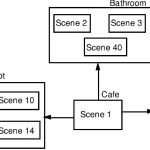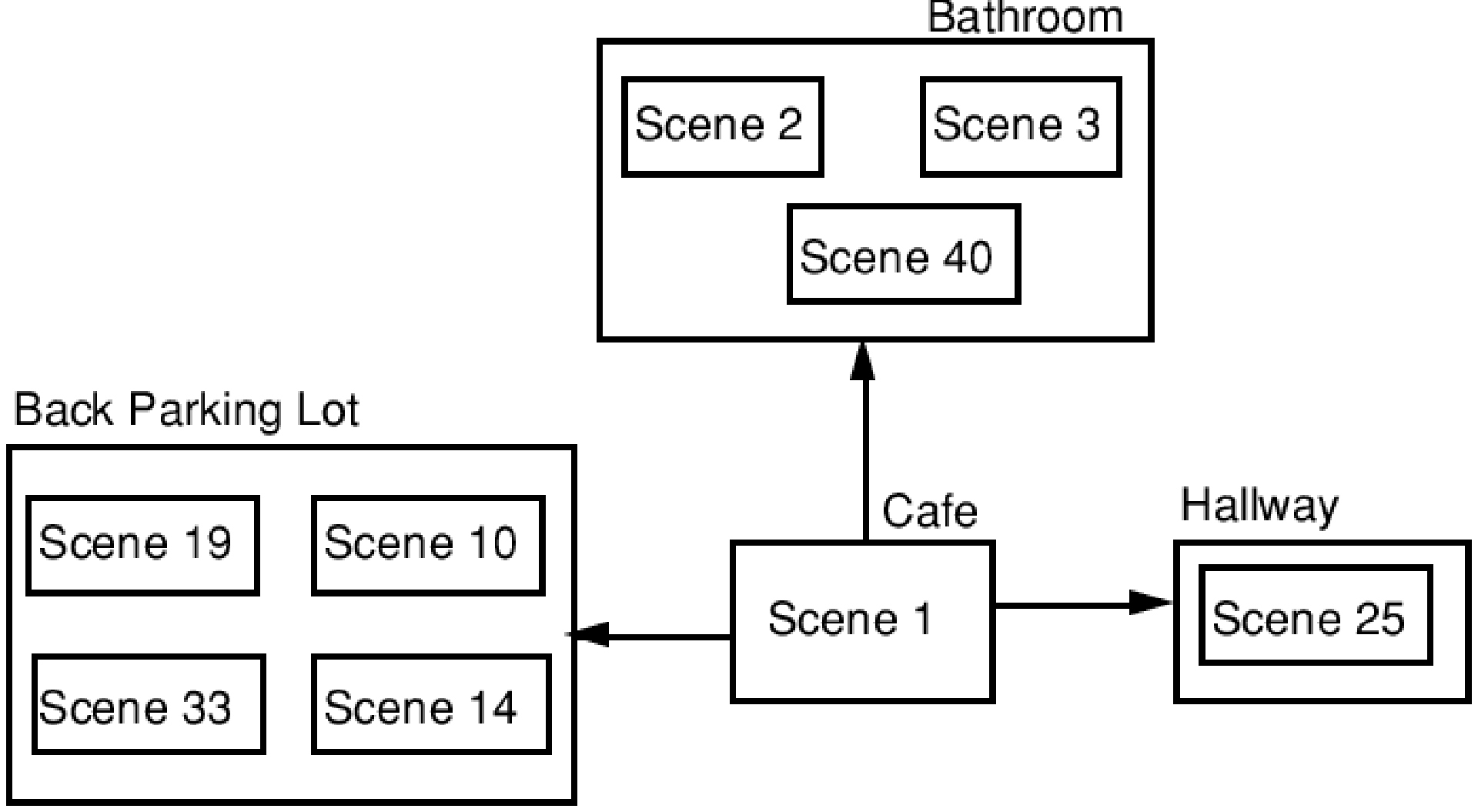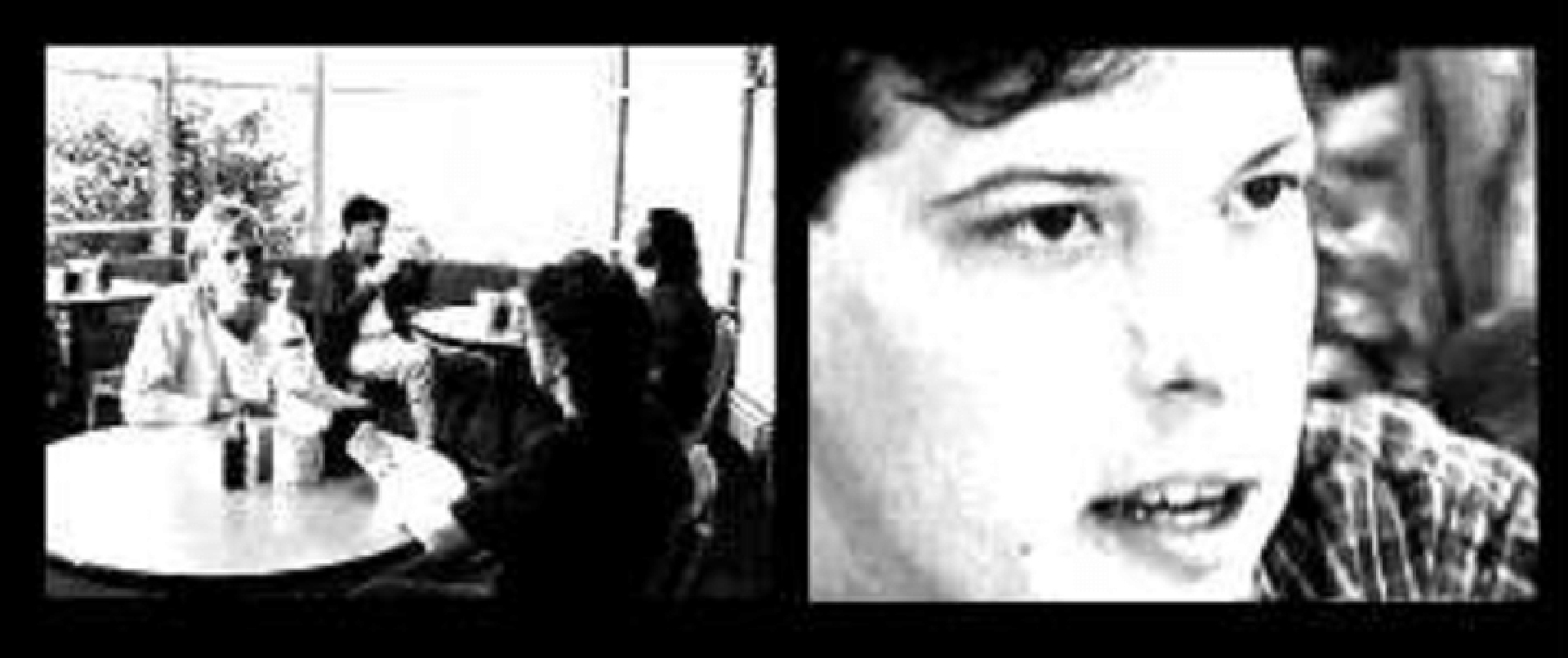Nitin Sawhany, David Balcom, Ian Emery Smith: CD-ROM: HyperCafe: Narrative and Aesthetic Hypervideo
Title:
- CD-ROM: HyperCafe: Narrative and Aesthetic Hypervideo
Artist(s) and People Involved:
Exhibiting Artist(s):
Symposium:
- ISEA97: Eighth International Symposium on Electronic Art
-
More artworks from ISEA97:


Artist Statement:
It’s like this: you’re listening to a conversation in a Cafe. Ian, one of the characters in HyperCafe, is talking about car crashes and you’re listening in. Just as he says, “people get hit by cars every day,” at this moment, a separate video scene appears next to him. It’s a young woman with blond hair, and she’s speaking also, only in a different context, to a different person—there’s a moment of tension when both scenes are playing side-by-side, and the choice is yours. You move your focus over to the woman, and you hear her voice louder. She says,”You hit her, you mean with the car?’,’and you click as she’s saying this. Suddenly Ian stops speaking, only traces of his image stay around for a few moments before fading away, leaving the woman, Kelly. It’s another conversation, linked thematically to Ian’s previous discussion. You follow this thread, you see where it leads, and the story, as it were, is affected by your choices. The character lives, the character dies—it’s really up to you. As Michael Joyce, one of the pioneering hypertext fiction writers said, “There is no simple way to say this”. Louis Malle’s Ascenseur pour l’échafaud, a French film from the late fifties, had a great performance by Jeanne Moreau and a captivating soundtrack by Miles Davis. Malle’s slow visual aesthetic and easy movement throughout the narrative threads in the film provides a sensual aesthetic unmatched in new media today. In Robert Altman’s film Short Cuts, the narrative ebbs and flows with the tides of people’s lives through the constant camera movements in the scenes.
In HyperCafe, we tried to establish a similar voyeuristic aesthetic and narrative feeling, yet with a strange empowerment, not unlike hypertext—and by extension, hypervideo. HyperCafe places the user in a virtual cafe, composed primarily of digital video clips of actors involved in fictional conversations in the cafe; HyperCafe allows the user to follow different conversations, via temporal and textual opportunities that present alternative narratives. Hyper-textual elements are present in the form of explanatory text, contradictory subtitles, and intruding narratives. HyperCafe has been envisioned primarily as a cinematic experience of hyper-linked video scenes. A minimalist interface is employed by utilizing few explicit visual artifacts on the screen to provide the user with a greater immersion in the experience of conversations in the cafe. The Engine allows authors to specify the presentation of hypervideo narratives at a high level, using hypervideo scripting, rather than custom programming. An aesthetic design of navigation and structural representation permits a new form of videotext expression for authors, and interpretative experiences for readers.
Category:
All Works by the Artist(s) in This Archive:
- Nitin Sawhany

CD-ROM: HyperCafe: Narrative and Ae...
[ ISEA97]- David Balcom

CD-ROM: HyperCafe: Narrative and Ae...
[ ISEA97]- Ian Emery Smith

CD-ROM: HyperCafe: Narrative and Ae...
[ ISEA97]






